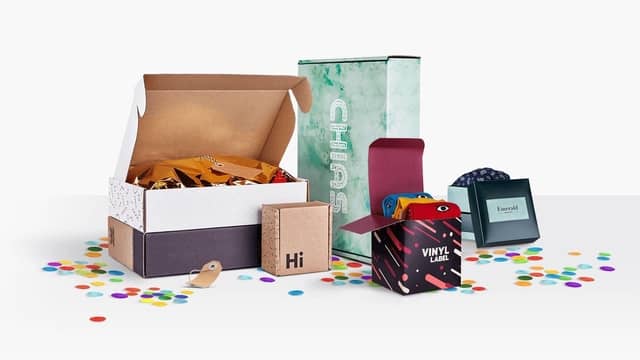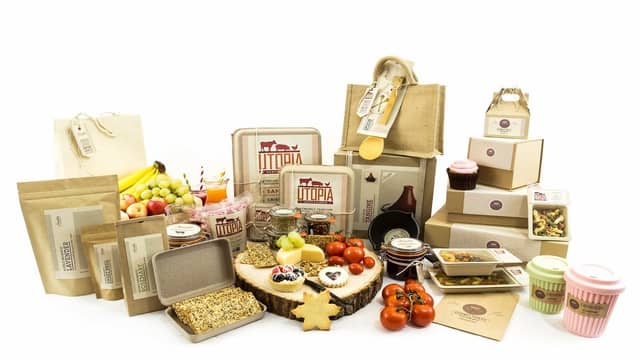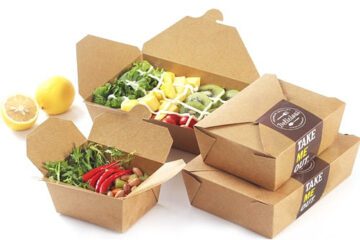Last updated on September 11th, 2023 at 01:44 pm
Industries that use box packaging for their product
Box packaging is the science of protecting, preserving, shipping, and marketing any product. The primary goal of well-designed industrial packaging is to protect. Packaging boxes designed to protect industrial goods can ensure product safety during shipping. There are different types of boxes used in the packaging.
Packaging is crucial in every and any type of industry. Packaging will only differ depending on how the product will be in the market in each industry. It will be designed for a particular need. The design can incorporate a variety of materials. Industries will use different types of packaging, but the goal will remain the same.
Packaging has a significant impact on the perceived value of a product and the industry as a whole. The question is what industries use packaging boxes. let’s discuss the most popular industries that use box packaging for their products.
Food Industry
Why is packaging important in the food industry?
Food packaging is at the heart of today’s food business, and only a small percentage of items are sold unpackaged. Good packaging reduces waste and ensures that the product maintains its desired quality over time. Although food packaging is an important part of the food business that helps in the safe storage of food and beverages, it may also be a source of food safety concerns.
Eco-friendly food packaging
Eco-friendly packaging is becoming increasingly popular in a variety of industries, including food and beverage. Without question, eco-friendly food packaging holds a unique position in the food industry. It is crucial for the food sector to present food items in decent or transparent packaging that gives customers an accurate sense and view of the products.
Types of food boxes
The use of food-grade materials in the manufacturing of food packaging boxes leads to ideal results. The most common cardstocks used in the production of these food boxes are:
- paper food boxes
- kraft food boxes
- corrugated food boxes
Cosmetic industry
The cosmetic industry is one of the world’s fastest-growing industries. It has a large number of products, which are growing every day. According to research, millions of cosmetic items are sold every day, and hundreds of businesses are constantly adding to the category’s list.
Role of packaging in the cosmetic industry
Are you surprised to hear that every year, 95% of new products fail? Packaging is responsible for a part of that high percentage. Packaging and advertising are huge markets in today’s society, and they’re only getting bigger.
Many cosmetics companies rely on packaging and advertising to attract customers. Unless a consumer has used a product before, the packaging will play an important role in their decision to buy it. Before looking at the ingredients or the price tag, customers form an opinion about the product based on its overall appearance.
Custom cosmetic box packaging
When it comes to cosmetic packaging, you should choose your stock, box style, and customizations carefully. The most commonly used materials are kraft and paper. The biodegradability of Kraft paper is commended. Chemical-free, lightweight, and easy to dispose of, the stock is ideal. It allows you to print in two colors.
Cardboard is a flexible and long-lasting material that may be printed in full color. Different packaging styles are preferred for different makeup and skincare products. Tuck end boxes, for example, are popular for lipsticks, lip glosses, mascaras, and eyeliners. You can explore die-cut shapes for your cosmetics and skincare products.
Retail industry
Today’s packaging includes much more than simply packing and protecting the product. It has become the primary means of presenting and promoting products in the retail industry. Brands have grown quite careful of their packaging and how they show their products to buyers. It is for this reason that manufacturers have developed cutting-edge packaging solutions.
Retail Packaging
It’s more than simply packing when it comes to custom retail packaging. Retail packaging is not only the most important medium for promoting a company, but it also aids in the development of a brand identity. This form of packaging is unique and innovative in comparison to non-retail packaging.
Types of boxes in the retail industry
Different brands depend on retail boxes for their success. They are popular among businesses because they are simple to customize in a variety of styles. In the market, there is a wide range of styles to choose from.
- rigid boxes
- window boxes
- flexible boxes
- die-cut boxes
- folding boxes
Retail Box packaging is highly customizable and can be designed to meet the needs of your product. Furthermore, flexible packaging may be ordered in a wide range of shapes and sizes; you can even have them die-cut into designs that match your product or brand, making them stand out even more at retail.
Custom retail packaging boxes
Customized retail packaging design must speak to the brand, clearly express its value, and therefore must leverage the company’s primary assets in the best possible way for customers.
What type of material is used in box packaging
Packaging, as well as the procedures and materials that go along with it, has become an important part of most manufacturing and distribution businesses. The most common materials for packaging considerations will be discussed here.
Finally, there are four main box materials to think about::
- Paper and cardboard
- Corrugated fibreboard
- Folding carton
- Rigid paperboard
Before we get into the many forms of packaging and the roles they play in manufacturing, it’s important to define a few terminologies that are commonly used in the industry. Packaging and the procedures and materials that go with it have become a big part of most manufacturing and distribution businesses.
Paper and cardboard
Paper and cardboard are the most common materials used in the packaging manufacturing process. It is widely utilized in a variety of industries, including the storage of foods and beverages, the transportation of heavy goods, and so on. This material has the significant advantage of being tenable, viable, and recyclable. Paperboard packaging has also been divided into numerous types, including Solid Bleached Sulfate (SBS) paperboard, which is used for cosmetics, pharmaceuticals, frozen food, and other industries.
This material’s key selling point is that it avoids high-resolution images, two-sided printing, and eye-catching labeling, all of which can help to improve brand messaging. It can also help to establish a brand identity in the minds of consumers.
Corrugated fiberboard
These boxes are made from a combination of line board and heavy paper medium. A smooth, outside surface that adheres to a shape is known as a line board. Single-phase corrugated boxes, single–corrugated wall boxes, double-wall corrugated boxes, and triple–wall corrugated boxes are the four types of corrugated boxes.
Here’s why they’re still so popular in e-commerce and other fields:
- A structure that is both protective and cushioned.
- Shipping costs are reduced due to the lightweight nature of the product.
- Easy to customize
- Recyclable
For e-commerce businesses that ship their products straight to their clients, corrugated packaging provides excellent durability.
Folding carton
One of the greatest packaging options for lightweight products is the folding carton. Due to their environmentally friendly nature, folding carton boxes are also a popular packaging option.
Because folding cartons are 100% recyclable, there are numerous environmental advantages to using them.
The following are some of the benefits of using a folding carton:
- Printing and finishing capabilities that are versatile
- Efficiency in terms of cost
- Friendly to the environment
- Friendly in retail
- Ideal for lightweight items.
On the other hand, there are some disadvantages:
- Not suitable for heavy or fragile items.
- This is not favorable to e-commerce.
- Easily crushed
Rigid paperboard
A rigid box is a thick, heavily reinforced board that is often four times thicker than a typical folding paperboard that does not print directly. These are standard packaging for luxury products.
Rigid packaging has a greater environmental impact than corrugated or folding carton packaging since it requires more components and processes to manufacture.
Customers are more likely to reuse and save custom rigid boxes for other purposes in their homes since it is also known as “premium packaging” or “luxury packaging.”
Rigid packaging is an excellent choice for:
- Luxury products
- Stability
- promoting narratives that can be reused
On the other hand:
- It is not cost-effective
- As a result, the packaging has a greater environmental impact.
- Higher shipping costs
Advantages of box packaging
There are various benefits of using box packaging for business and the most important are elaborated below:
- Packaging boxes provide a purpose other than simply holding and protecting the product.
- Ensure the product’s safety during shipment.
- It is simple to carry from one place to another.
- Affordably priced and customized to the product
- One of the most incredible advantages of customized packaging is that it can be used as a brand marketing strategy.
- Custom packaging boxes will set the brand differently and attract attention to It.
These are some of the most significant advantages of custom packaging a product. Custom box designs can easily improve your shipping performance because you’ll have more customers ordering your products if you do it right. It will also aid your marketing efforts, raise brand awareness, and dramatically promote your company’s growth.
Covid-19 and Packaging
Many manufacturers and retailers experienced additional packaging issues as a result of the COVID-19 pandemic. Because of the lockdown, the entire industry is forced to rely only on e-commerce platforms to deliver their goods to customers’ doorsteps. As a result, businesses are placing a greater emphasis on packaging in order to efficiently deliver products to their customers.
These and other challenges are the order of the day, and companies that can pivot their production and packaging options will be the ones who profit from these new opportunities.











